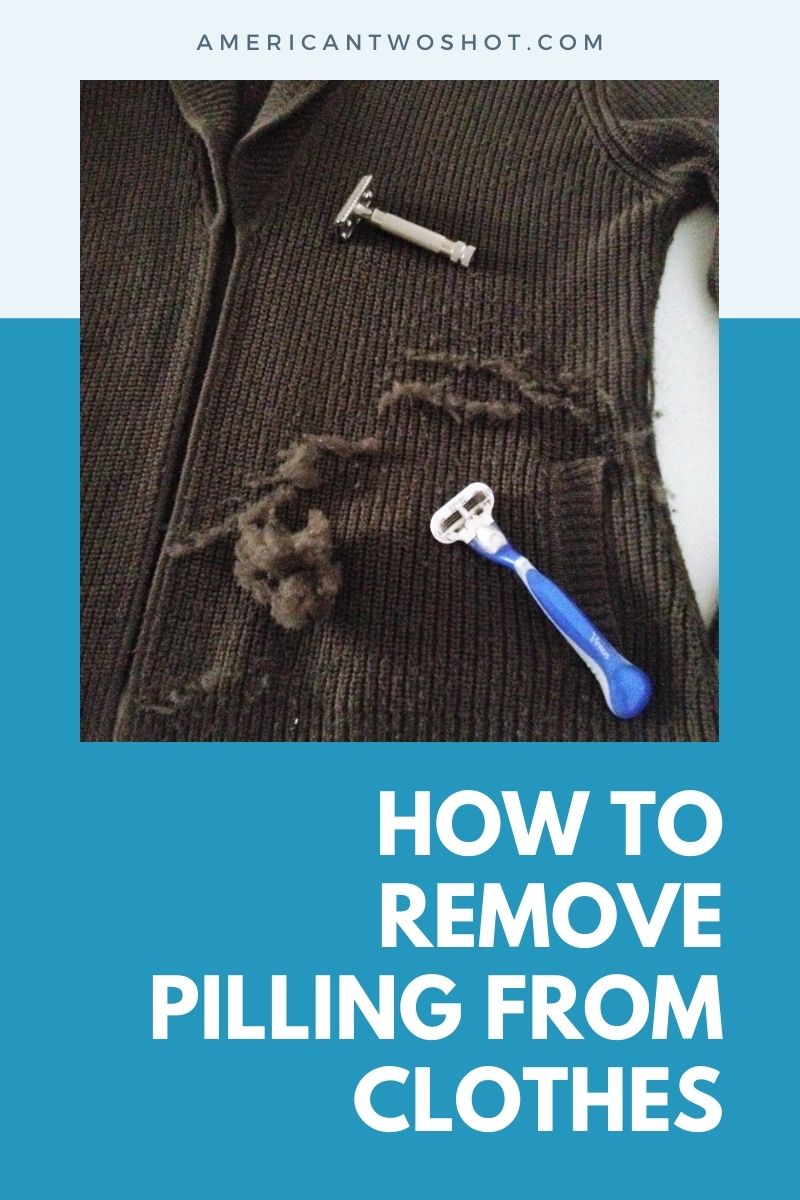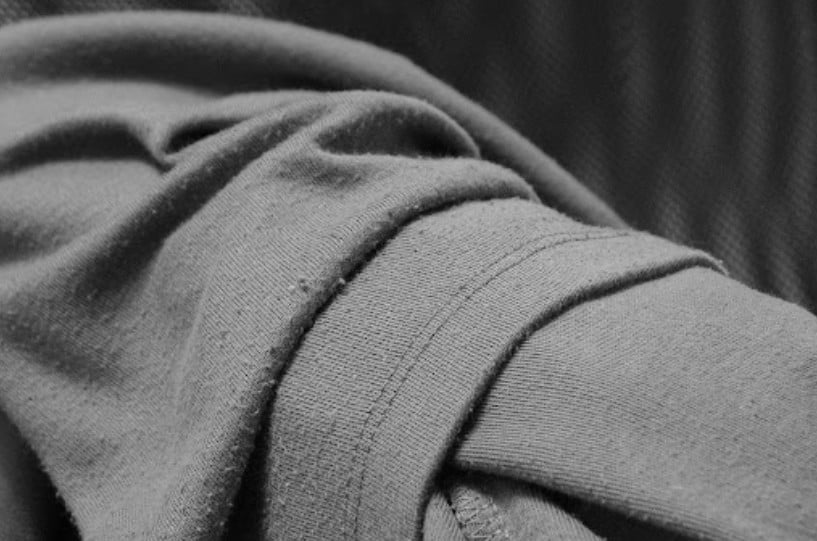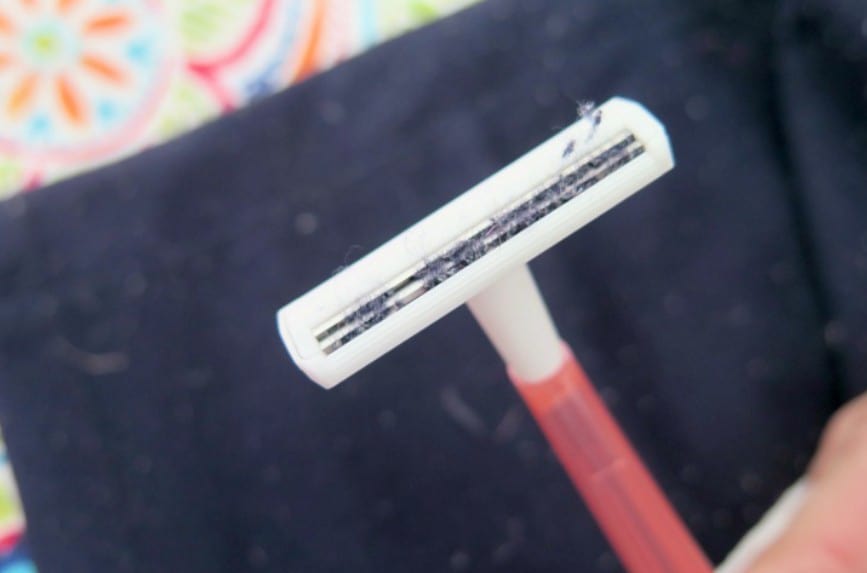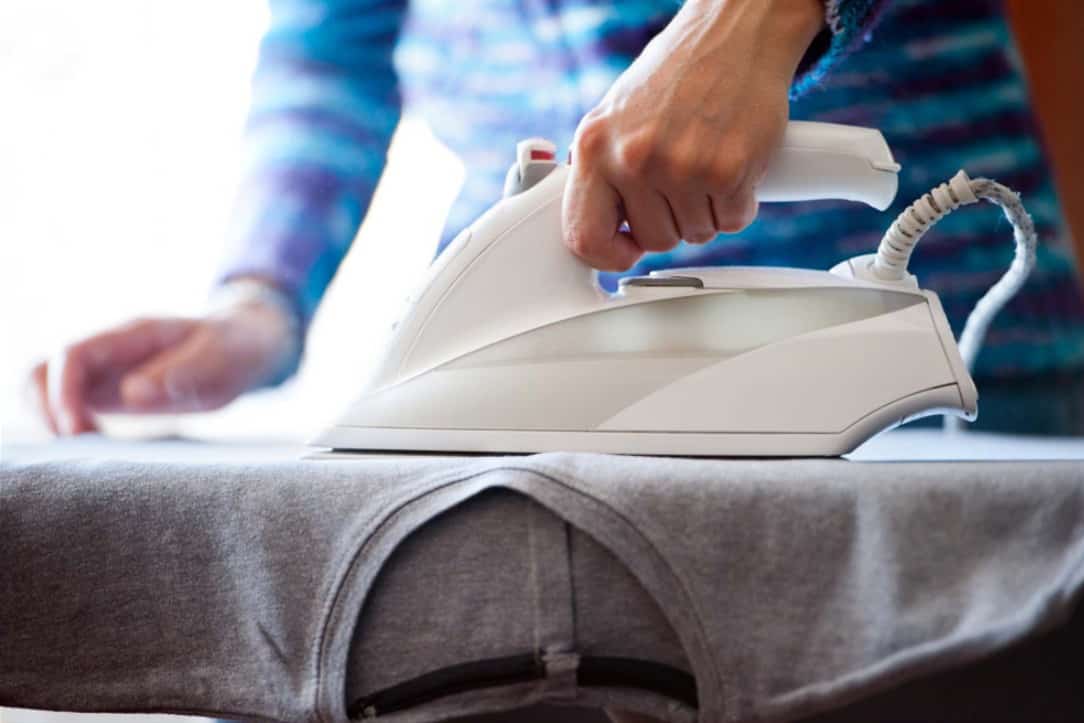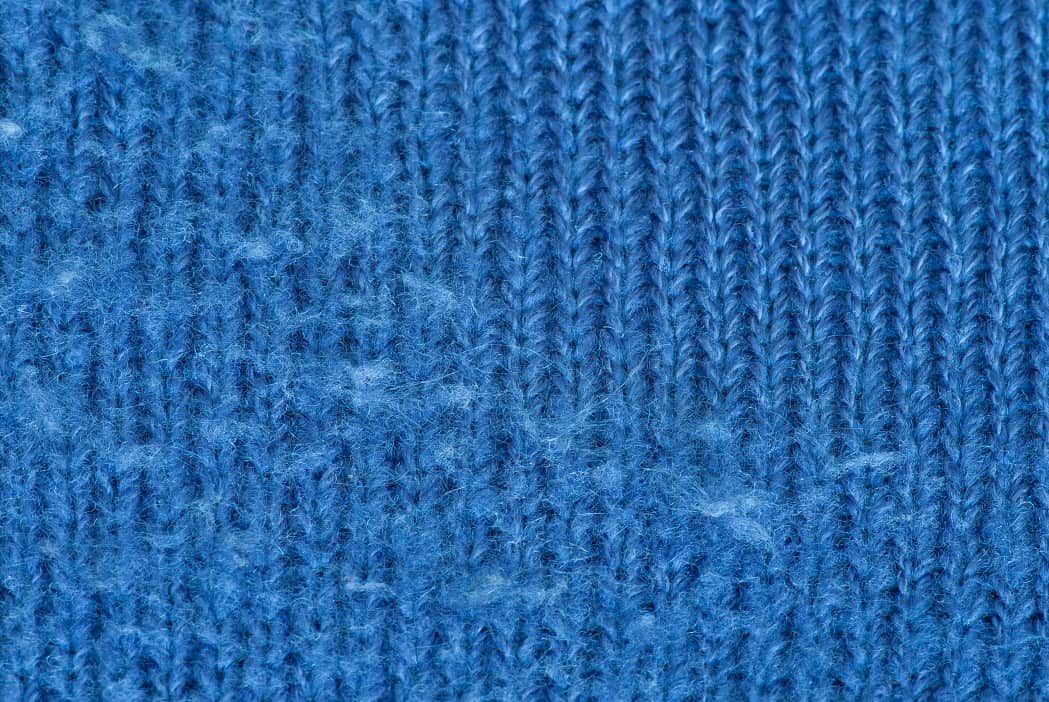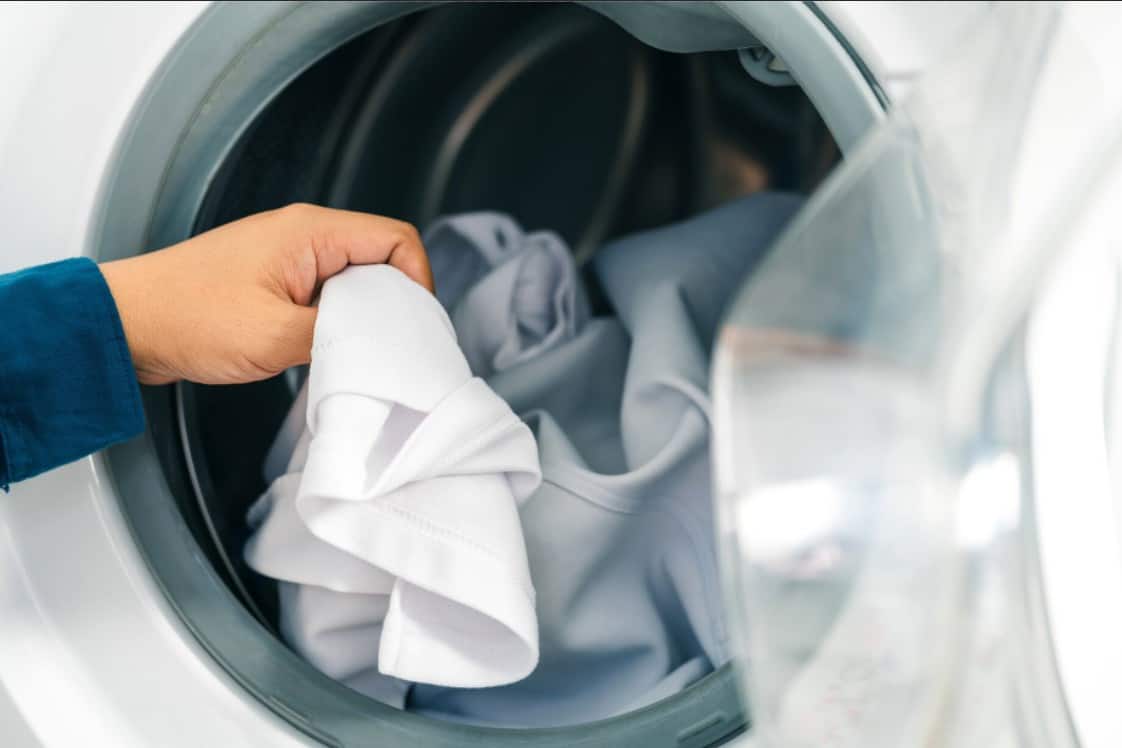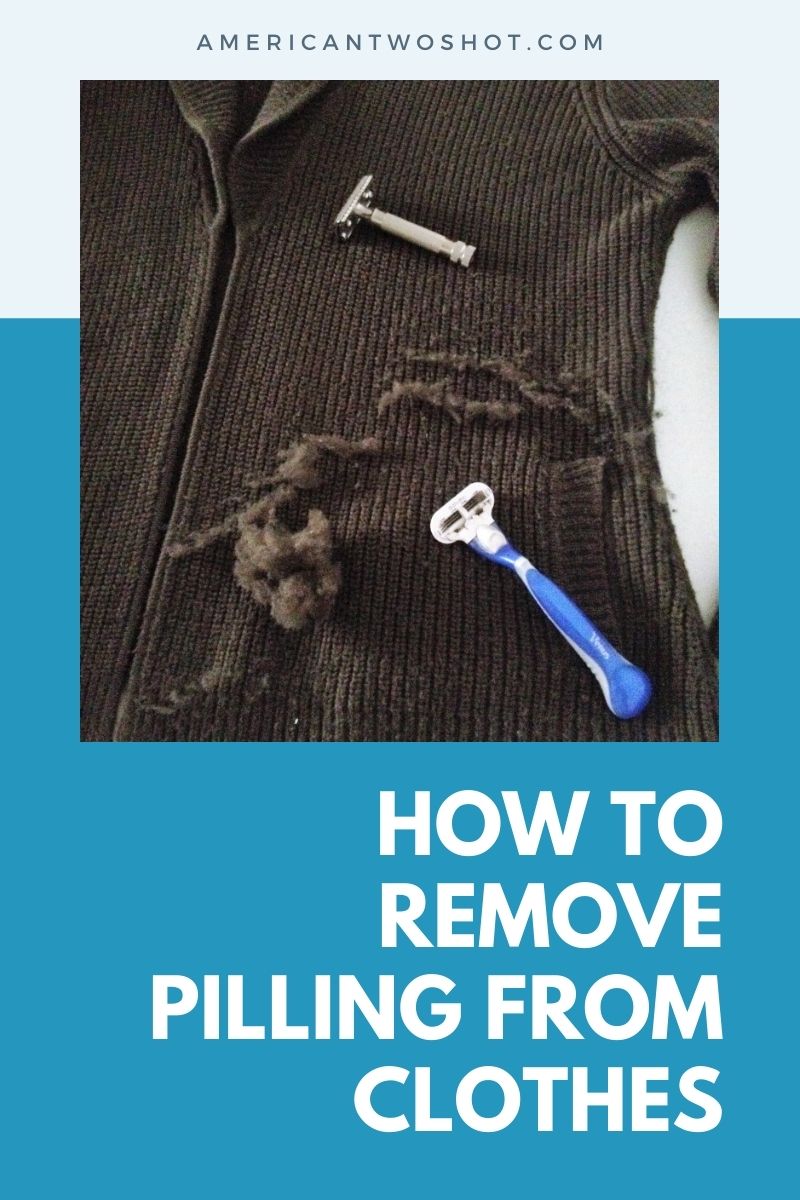Over time, as you wear your clothes, you’ll likely notice small balls of lint forming on them. These balls, also called pills, can result from poor-quality fabrics or friction. Anyway, they don’t make your clothes look nice, and just a little trigger on them can pull more fibers out of your clothes. That being said, how do you remove and prevent pilling from clothes?
Pilling: What It Is And What Causes It
Pilling is the process of broken, loose fibers forming small balls on your clothes. Here’s a video that provides more information about pilling:
Sometimes, you can easily deduce a piece of cloth will pill judging from the quality of the fabric. The parts of the clothes prone to pilling are the armpits, between the thighs, the butt of your clothes, etc. However, not all clothes pill. Some can maintain their quality for as long as you wear them.
4 Causes Of Pilling
Quite a number of reasons cause pilling – poor artistry, weak fibers, excessive use of clothes, abrasion, etc.
Weak fibers
The quality of the fibers determines whether your clothes will pill or not or when they will. Not all fibers are the same; some are stronger than others. For example, linen, denim, and silk do better than polyester, wool, cotton, etc., because they’re longer. As such, they’re less likely to get broken.
Workmanship
Equally important is the quality of your clothes. Woven fabrics pill less than knitted ones. A material with many loose fibers will pill more than one with tightly knitted yarns. For example, a knitted sweater is more likely to pill than a woven shirt. Also, the quality of the workmanship matters. Stitches that aren’t properly hemmed or finished at the joints have higher chances of pilling.
Abrasion
Almost every time, your clothes are exposed to abrasion, which means friction that results from your clothes rubbing against another material. For instance, the back of your clothes rubs against your back if you’re carrying a knapsack, or one of the sides of your clothes rub against a purse, making such a part prone to pilling.
However, not all fibers accommodate abrasion. Fibers such as polyester, nylon, etc., are abrasion-resistant, which partly explains why they are blended with non-resistant fibers like wool to make long-lasting clothes.
Excessive use of clothes
Wearing your clothes excessively also makes them prone to pilling. Usually, the more you wash your clothes, the lesser the quality. This explains why fibers become weak over time, and you find your old clothes pilling. To worsen things, the weak fibers attract loose threads from other garments during washing, hastening the pilling process.
A Step-by-step Guide On How To Remove Pilling From Clothes
While you can keep your clothes pill-free, you shouldn’t abandon them when they start pilling. Pilling makes your clothes look old, which doesn’t make for a good fashion practice. Below is a step-by-step guide on how to fix it.
Fix all snags
Snags are long pieces of threads that come out of your clothes. Sometimes, the pills on your clothes may be triggered by a sharp object, which pulls out more fiber from your clothes. If you don’t fix snags immediately, they’ll keep getting longer, which will affect both the quality and appearance of your clothes.
Instead, fix the snags first using a threaded needle. Pull the needle through the snag’s middle and knot the snag to the thread’s end. Pull the needle through the snag’s base and turn the cloth inside out. Knot the thread that comes out of the snag’s base and snip, leaving a small tail. Use a razor blade to cut the snag; don’t snip it to prevent a hole in your clothes.
Shave the pills
After fixing the snags, if there are any, the next step is to shave the pill. You can use a razor blade, a fabric shaver, or a pumice stone. If you’re using a razor blade, be careful not to cut your clothes. Shave the pills gently.
If you’re using a pumice stone, rub the stone on your garment on the pilly part of your cloth. Be careful not to rub it against other parts free from pills. Use a paper towel to clean the shaver or blade, or roll a tape over the pills to remove them.
Iron the clothes
After shaving the pill off your clothes, iron that part to smoothen its appearance. Ensure the iron’s temperature is appropriate for that type of cloth to prevent burns.
When removing the pills from your clothes, try not to worsen the case. For instance, be careful with the force you apply. Remember that more agitation only aggravates the issue. In addition, if the clothes are worn out already, even shaving the pills won’t help. You should discard such clothes and buy new ones.
Can Pilling Be Prevented? Here’s A Step-by-step Guide
You don’t have to wait for your clothes to pill before you know how you should have protected them in the first place. Below is a step-by-step guide on how to prevent your clothes from pilling.
Buy good-quality clothes
The first step in preventing clothes from pilling is to scrutinize every piece of cloth before you buy it carefully. Clothes made of weak fibers or poor artistry will start pilling as soon as possible.
As such, you need to look for tightly woven clothes with fibers less likely to pill. Also, be careful with fiber blends. Clothes made from different fibers are more likely to pill. If you’re going for a fiber blend, ensure the fibers aren’t more than two.
Reduce abrasion
The next step is to reduce abrasion when you start wearing the clothes. As much as possible, ensure you keep other materials from rubbing against your clothes. You can pack up your hair when you wear clothes that are likely to pill to avoid friction, for instance. Also, prevent fabrics from rubbing against each other. Turn clothes inside out if you intend to keep them with other items.
Wash carefully
You don’t have to wash your clothes aggressively to remove the dirt. Overwashing reduces the quality of the fibers. Be gentle when washing your clothes. Minimize the number of movements your clothes make when washing.
Hand-wash or use gentle cycles for clothes with naturally weak fibers. You can also use fabric conditioners during washing to reduce friction. Also, don’t use harsh detergents. Go for the types that protect the fibers yet still do an excellent job of making your clothes clean. Care for each piece of cloth according to the manufacturer’s recommendations.
Line-dry your clothes
Since minimizing agitation reduces the chances of pilling, it’s advisable you line-dry your clothing instead of using a dryer. A dryer causes your clothes to rub against one another, and delicate pieces may not survive this. However, line-drying reduces movements to your clothes, thereby keeping them pill-free.
Store your clothes properly
The final step is to store your clothes properly. It’s terrible to squeeze your clothes somewhere after washing, only remembering them when you want to wear them. Hang your clothes properly in your wardrobe. If you’re keeping them in a box, turn them inside out and tuck them neatly. Put clothes with sharp designs in a separate box.
5 Tips For Keeping Your Clothes In The Best Condition
If you keep to the rules of keeping your clothes in the best condition, you’ll reduce the chances of pilling. While it’s good to buy high-quality clothes, you must care for these clothes very well. Below are some tips to practice.
Reduce washing
You don’t have to wash your clothes every single time you wear them; it’s no crime if you repeat clothes. Train yourself on how to use your clothes neatly to repeat them. The more you wash, the less the quality of your clothes. Besides, not every fabric can survive constant washing.
Keep your clothes from stain
Not many things beat how stain spoils clothes. It’s your responsibility to protect your clothes from getting stained. For example, you can use a table napkin to cover your chest while eating. When carrying hot liquids, be careful so that they don’t spill on you. Avoid places where your clothes are likely to get stained and if you must go there, wear overalls or casual clothes. And if your clothes get stained, pretreat the stain before you wash the clothes.
Reduce friction
As mentioned earlier, friction isn’t good for your clothes. Carry a handbag instead of a knapsack, pack your hair up to prevent it from rubbing the back of your clothes. Be careful where you sit and of the things that come in contact with your clothes. Avoid sharp designs that can snag your garments.
Repair when necessary
As you use your clothes, you might have to make adjustments such as stitching a tear, loosening the hems to contain your size, altering the style to make it more trendy, etc.
Except the clothes are worn out beyond redemption, make it a habit to repair your clothes for a more extended period of use. This way, you contribute your quota towards reducing clothes in landfills.
Love your clothes
You can only care for what you love. When you love your clothes, you’ll go the extra mile to keep them. Don’t buy a piece of fabric to keep up with societal standards or show off to anyone. More often than not, you end up neglecting those clothes, thereby reducing their value. Also, buy clothes you can maintain.
Summary
Pilling is an unsightly condition that should be fixed as soon as possible. Leaving it causes further damage to your clothes, and you don’t want that. However, avoid agitating the affected clothes further when removing the pills. Besides, you should commit to keeping your clothes in good condition to prevent pilling and other types of damage.

Jessica Oliver is a fashion enthusiast with more than ten years of experience in the industry. She previously managed her own clothing store in New York before becoming a mother of three. With a passion for sustainability and a desire to share clothing care and recycling tips.

